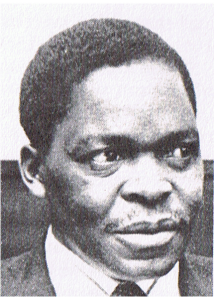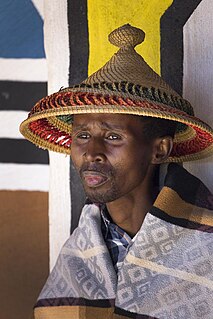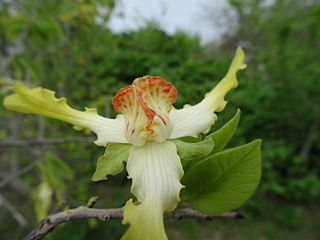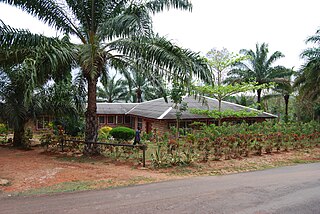 W
WTraditional African medicine is a range of traditional medicine disciplines involving indigenous herbalism and African spirituality, typically including diviners, midwives, and herbalists. Practitioners of traditional African medicine claim to be able to cure a variety of diverse conditions including cancer, psychiatric disorders, high blood pressure, cholera, most venereal diseases, epilepsy, asthma, eczema, fever, anxiety, depression, benign prostatic hyperplasia, urinary tract infections, gout, and healing of wounds and burns and even Ebola.
 W
WTraditional healers of Southern Africa are practitioners of traditional African medicine in Southern Africa. They fulfill different social and political roles in the community, including divination, healing physical, emotional and spiritual illnesses, directing birth or death rituals, finding lost cattle, protecting warriors, counteracting witchcraft, and narrating the history, cosmology, and myths of their tradition. There are two main types of traditional healers within the Nguni, Sotho-Tswana, and Tsonga societies of Southern Africa: the diviner (sangoma), and the herbalist (inyanga). These healers are effectively South African shamans who are highly revered and respected in a society where illness is thought to be caused by witchcraft, pollution or through neglect of the ancestors. It is estimated that there are as many as 200,000 traditional healers in South Africa compared to 25,000 doctors trained in bio-medical medicine. Traditional healers are consulted by approximately 60% of the South African population, usually in conjunction with modern biomedical services.
 W
WThe African clawed frog is a species of African aquatic frog of the family Pipidae. Its name is derived from the three short claws on each hind foot, which it uses to tear apart its food. The word Xenopus means "strange foot" and laevis means "smooth".
 W
WBelonogaster is a large genus of mainly Afrotropical quasisocial wasps, although some species occur in Arabia and two extend as far as India. They have characteristics of both the eusocial and the solitary wasps. Belonogaster constructs communal paper nests where the grubs are fed on masticated, soft-bodied insects such as caterpillars. The type species is Belonogaster juncea, which consists of two subspecies: Belonogaster juncea colonialis and Belonogaster juncea juncea. Belanogaster wasps are an important food source for wintering European honey buzzards in sub-Saharan Africa. In African traditional medicine, wasps of the genus are cooked with plant roots and consumed to cure various childhood sicknesses, as well as having ceremonial use similar to that of honey bees. Some birds choose to build their nests near the nests of Belonogaster for protection, including mousebirds and weavers.
 W
WA boli is a fetish of the Bambara or Malinké of Mali.
 W
WGordon Lloyd Chavunduka was a Zimbabwean sociologist and traditional healer.
 W
WCurtisia dentata is a flowering tree from Southern Africa. It is the sole species in genus Curtisia, which was originally classed as a type of "dogwood" (Cornaceae), but is now placed in its own unique family Curtisiaceae.
 W
WThe medicine of the ancient Egyptians is some of the oldest documented. From the beginnings of the civilization in the late fourth millennium BC until the Persian invasion of 525 BC, Egyptian medical practice went largely unchanged but was highly advanced for its time, including simple non-invasive surgery, setting of bones, dentistry, and an extensive set of pharmacopoeia. Egyptian medical thought influenced later traditions, including the Greeks.
 W
WThe Isinuka Mud Caves and Sulphur Pools are located next to the Isinuka village which is located in OR Tambo District Municipality, Eastern Cape, South Africa. The name "Isinuka", means "place of smell", which refers to the odour of the sulphur which diffuses from the springs. This name was given by the Mpondo people of the Eastern Cape who regard this site as a sacred area. The springs are also visited by thousands of tourists who seek relief from various ailments yearly.
 W
WKino is a botanical gum produced by various trees and other plants, particularly bloodwood species of eucalypts and Pterocarpus, in reaction to mechanical damage, and which can be tapped by incisions made in the trunk or stalk. Many Eucalyptus, Angophora and Corymbia species are commonly referred to as 'bloodwoods', as the kino usually oozes out a very dark red colour. Kino flow in angiosperms contrasts with resin flow in conifers. The word kino is of Indian origin. In Australia, "red gum" is a term for kino from bloodwood trees and red acaroid resin from Xanthorrhoea spp.
 W
WThe cosmogram is a symbol which is one of many manifestations of Kongo, or Bakongo, culture in the Americas. It is described and illustrated in detail in Flash of the Spirit: African and Afro-American Art and Philosophy by Robert Farris Thompson. It was a core symbol of the Kongo culture. An ideographic religious symbol, the cosmogram was called dikenga dia Kongo or tendwa kia nza-n' Kongo in the KiKongo language. Ethnohistorical sources and material culture demonstrate that the Kongo cosmogram existed as a long-standing symbolic tradition within the BaKongo culture before European contact in 1482, and that it continued in use in West Central Africa through the early twentieth century. In its fullest embellishment, this symbol served as an emblematic representation of the Kongo people and summarized a broad array of ideas and metaphoric messages that comprised their sense of identity within the cosmos.
 W
WMale Initiation of the Basotho Men is known as Lebollo la banna in Sesotho.
 W
WMonodora grandidieri is a species of plant in the family Annonaceae. It is native to Kenya, Malawi, Mozambique, Somalia, and Tanzania. Henri Ernest Baillon, the French botanist who first formally described the species, named it after the French naturalist and explorer Alfred Grandidier who collected the specimen Baillon examined. It has been reported to be used as a traditional medicine by the Giriama and Digo people of Kenya.
 W
WNganga is a Kikongo language term for herbalist or spiritual healer in many African societies and also in many societies of the African diaspora such as those in Haiti, Brazil, and Cuba. It is derived from *-ganga in proto-Njila, an early branch of the Bantu family. The verb form related to it, -gang- relates to wisdom, knowledge and skill. As this term is a multiple reflex of a Proto-Bantu root, there are slight variations on the term throughout the entire Bantu-speaking world.
 W
WNkisi or Nkishi are spirits or an object that a spirit inhabits. It is frequently applied to a variety of objects used throughout the Congo Basin in Central Africa, especially in the Territory of Cabinda that are believed to contain spiritual powers or spirits. The term and its concept have passed with the Atlantic slave trade to the Americas.
 W
WOtjize is a mixture of butterfat and ochre pigment used by the Himba people of Namibia to protect themselves from the harsh desert climate. The paste is often perfumed with the aromatic resin of Commiphora multijuga (omuzumba). The mixture lends the skin a deep orange or reddish tinge. This symbolises earth's rich red color, and blood, the essence of life, and is the Himba ideal of beauty. The Himba use otjize in their hair as well, which is long and plaited into intricate designs. Himba women start designing their hair from puberty using the red clay as well as adding on the hair of goats for stylist purposes.
 W
WPaxherbals also known as Pax Herbal Clinic and Research Laboratories is a Nigerian alternative medicine product manufacturing company founded by Adodo Anselm in 1996 at Ewu Monastery.
 W
WSphaerotheriida is an order of millipedes in the infraclass Pentazonia, sometimes known as giant pill millipedes. They inhabit Southern Africa, Madagascar, South and Southeast Asia, Australia and New Zealand. Like the Northern Hemisphere pill millipedes of the order Glomerida, these millipedes can roll into a ball when disturbed. When they are rolled-up, most sphaerotheriidans reach a maximum size of a cherry or golf ball, but some species from Madagascar can even reach the size of an orange. When rolled-up, predators are unable to unravel giant pill millipedes since the margins of their second and last dorsal plates fit perfectly into one another, creating a sealed ball. A few giant pill millipede species are able to produce sound, the only millipedes known to do this. This order of millipedes is also unique in that some African species are used for medicinal purposes.
 W
WPhemba, also known as Yombe maternity figures, refers to sculptural objects that depict the figures of a mother and child. Phemba are iconic examples of Kongo art and according to Thompson (1981) "reflect the degree to which women are treasured in Kongo culture, not just for their fecundity, but as seers and guardians of the spirit". Kongo societies are matrilineal.